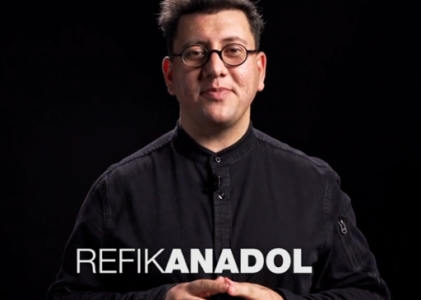Art Materials for Superpowers
Trying to think yourself out of the box? Try thinking your way out of the tesseract, a figure in four dimensions — the 8-cell 4-cube.
Artists all over the world are finding new media to express themselves in. This blog has highlighted art made from draped fabrics and from unplaited rice rope fibers.
Give yourself the nearly-twelve-minute time it takes to re-set everything you knew about art materials. I feel like someone upset a bushel of ping-pong balls inside me and they’re bouncing every-which-way. Amazing, unthinkable, way outside the galaxy!
The artist is Refik Anadol.
Enjoy.
________________________
It’s not uncommon for me to think further after publishing on a topic. My idea was that I had misspoken of Anadol’s work, that the data points are more like the model on the chair. The teapot, cube, rosebud. The algorithms would serve as the brushes and clay. But in reviewing this talk I hear him equating data points with pigments. You have to be a numbskull or a philosopher to argue about the interpretation of a metaphor — already a figure of speech. As if there was something science could measure and report on. Pin down for posterity.
I’ll have to think harder than I have to make a data-pigment connection. Its distance from my thinking is discordant enough that it will keep twitching uncomfortably in my brain.
The most exciting phrase to hear in science, the one that heralds new discoveries, is not “Eureka” but “That’s funny…” Isaac Asimov (1920–1992) in American Scientist.
The Princeton polymath John Tukey (1915–2000) observed that “the greatest value of a picture is when it forces us to notice what we never expected to see.” (same source).
_____________________
Please see also my next profile of Rus Khasanov. Between them you see how wide artistic curiosity can differ and still be Art.

